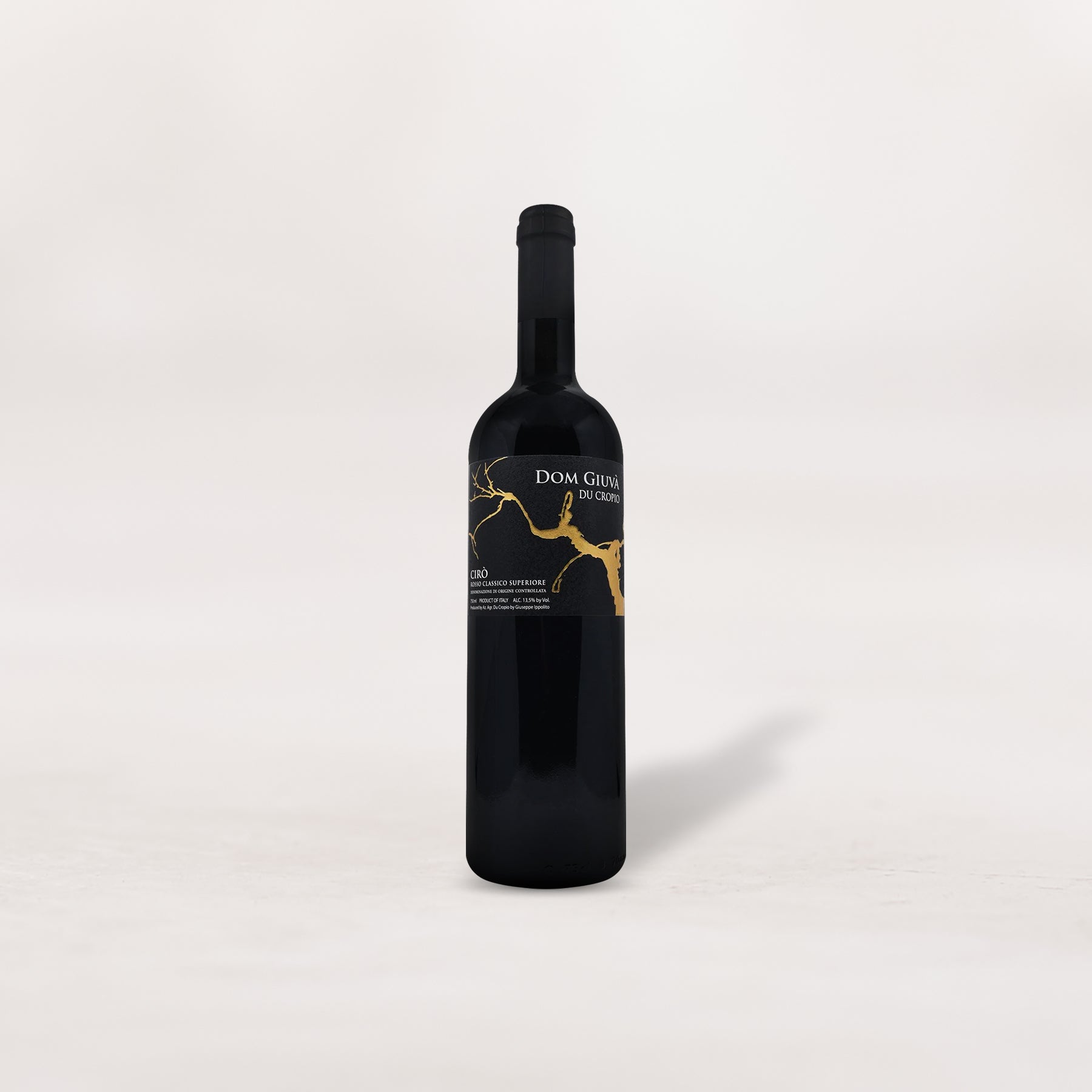Although there are many intriguing terroirs within the Southern Italian region of Calabria (the “toe” of the boot), the coastal region of Cirò—and its red wine from the Gaglioppo grape—is the reference point. In the past, the Cirò appellation was more or less defined by a producer named Librandi, the only winery with any significant international presence. But today, this remote growing zone along Calabria’s Ionian coast is teeming with exciting wines from an ever-expanding cast of characters. Today’s wine from Du Cropio, in fact, has quietly but assuredly ascended to the top rank of not just Cirò but southern Italy in general. It’s a modern benchmark in a region which remains one of Italy’s poorest and least-traveled. And this isn’t only about the distinctiveness of a native Calabrian grape variety—Gaglioppo—that many haven’t heard of. This is about the start-to-finish quality of a red wine that left an array of more-expensive bottles in the dust. Oh, and it happens to be from a region celebrated for wine since the days of the ancient Greeks. Not bad for such a humble price, right?
Many Americans have familial links to Calabria via the massive number of immigrants who came from there at the turn of the last century. Calabria was (and still is) one of the country’s poorest regions: physically, it’s about 90% mountains and is badly underserved in terms of infrastructure (railways, highways, etc.). Its economy is still predominantly agricultural, but most of its young people move away in search of work not just in northern Italy but elsewhere in Europe. Although the region was one of the first landing points for the ancient Greeks and the heart of what was once known as Enotria (‘land of wine’), Calabria produces very little wine relative to other Italian regions. Olive and bergamot citrus groves are more prevalent than vines.
Cirò is still Calabria’s principal wine town, situated about halfway up the Calabrian coast overlooking the Ionian Sea. It was one of the original Greek settlements on the southern Italian peninsula and the site of the earliest Olympic games—where an ancient version of Cirò wine was given to the winners as a prize. Du Cropio (which in local dialect means “doctor of agronomy”) is run with passion by proprietor Giuseppe Ippolito, who organically farms a total of 30 acres of vineyards in the villages of Cirò Marina (right on the Ionian Sea) and Cirò (further inland, on undulating hills of sandy clay studded with limestone).
“Dom Giuvà” is one of only three red wines produced at Du Cropio. It is crafted from 100% Gaglioppo that is fermented in stainless steel before being racked to large oak botti (casks) for aging. One characteristic of the Gaglioppo variety is that it often displays a mature character even when young; as you can see, this is a 2016, so you’ll detect many appealing “secondary” notes beginning to creep into the picture following some bottle age.
“Dom Giuvà” is also identifiably “southern” in style—warm and plush, with lots of ripeness and soft tannins—but not to the point of feeling “cooked” or “stewed.” We often find ourselves evaluating Cirò wines much as we do Châteauneuf-du-Pape and other warm-climate reds from southern France (i.e. is there balance, or too much syrupy ripeness?), with one important caveat: Gaglioppo is lighter than the likes of Grenache, Syrah, and Carignane. Recent studies have shown Gaglioppo to be a cross of Sangiovese and a local variety, Mantonico, and author Ian D’Agata, whose massive book, Native Wine Grapes of Italy, is a sommelier lodestar, notes that Gaglioppo may thus be related to the popular Frappato grape of Sicily as well.
Gaglioppo is characterized by a few things: (a) it’s a grape with low color pigmentation (like Piedmont’s Nebbiolo), so the wines look brickish/orangey even in their youth; (b) although it’s a hot climate grape, it’s more Pinot Noir/Sangiovese in terms of the scale/weight of its wines; and (c) it has great natural acidity, keeping it from devolving into something sweet or raisined. “Dom Giuvà” adds another important component to the equation—a clean, polished quality very few Cirò reds possess. In the glass, it’s a deep, healthy garnet-red with only a slight hint of bricking at the rim, with heady aromas of cherry pie, blood orange, raspberries, warm spices, leather, toast, and an herby Mediterranean-ness. It has a luscious, luxurious feel to its tannins but also a wildness—what the French would call a sauvage quality—that places it in proper context. It’s ready to drink now and over the next few years in Burgundy stems at 60 degrees, aching to be paired with the attached baked pasta recipe, with its “Big Night” array of ingredients. Pure Southern Italian love! Enjoy!











